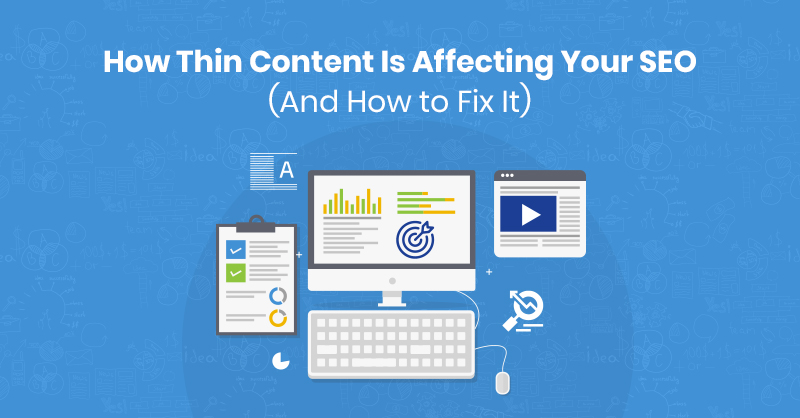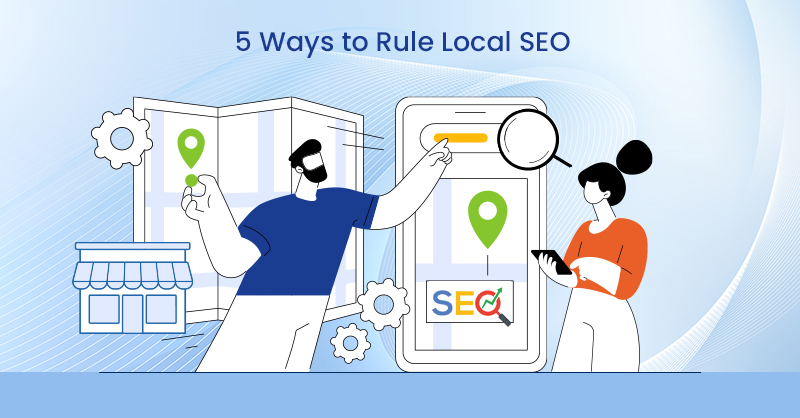Thin content is one of the more common mistakes that business owners make, and when adjusted to follow Google’s best practices, the content structure can make a very big difference in where you get ranked on search engines, how much time your audience stays on your website, and more.
What does Google consider to be “thin content?” Thin content is seen as web pages that are lacking in quality and resolving nothing for the reader - leaving searchers hungry for more.
Google runs its SERP (Search Engine Responsive Pages) in ranking order of their algorithm guidelines of EAT (Expertise, Authoritativeness, Trustworthiness). Following this structure should help business owners create valuable content for their website and tread far away from the no-no that is thin website content.
You may be asking yourself, why it’s so bad to have “thin content” on a website. If your website users are only interested in the product you sell, or they are already interested in hiring the service you offer, why is content so important?
Whether you are looking to refresh the content on the site, or you are writing from a blank slate, here are five helpful tips of what to look out for in regards to the content on your website.

1.Lack of usefulness
Websites are launched and removed on a regular basis. The internet is massive – and with 1.7 billion websites that run through Google’s SERP, there are presumably multiple other companies with a similar website that sell products and services just like yours. Therefore, when creating content for your website, you want to make sure you acknowledge the needs of your website users. Depending on the purpose of your website, this could result in having many different types of content throughout the site. However, there are three key elements to always keep in mind and refer to while writing: EAT – (Expertise, Authoritativeness, Trustworthiness).
2. Duplicate content
There are two different contexts this refers to, and they are both some of the more common mistakes that business owners make in regards to their website content.
The first, playing more to its name, is having multiple pages on the site using identical pieces of content. For obvious reasons, your website users are looking for the answers to their questions on your page. By not providing them with valuable information for your services, your users will quickly be jumping ship to find another site that can provide them with the insights they were looking for.
The other context that is more commonly seen is“duplicate content”. This is when you focus on the same keywords over and over on every page of your site. Now, this may seem confusing as SEO experts are always telling you to focus on keywords. Your content is, of course, supposed to include keywords that are used in popular searches related to your industry.
However, focusing on the same keywords on every page of your site tells search engines that the content across your website is too similar, and it will essentially appear the same as the API design of Google. When it comes to keywords, it is in your best interest to make sure that they are the main focus of a title, so that they can be strategically placed throughout the page’s content in a way that will make sense for both your website users and Google’s algorithm.
Back in the day of keyword stuffing, these patterns of duplicate content were another low-value way that websites were able to rank themselves higher on search engines. However, including their industry's top-performing keywords repetitively was not beneficial for website users. This is why Google created the algorithm to reward websites that follow their guideline structure for creating valuable and informative content.
3. Content from someone else’s website
This refers to copying and pasting with limited editing to the content. This practice could result in getting your website pulled from search engines, so tread carefully when researching the correct content for your website. Originality is key, and you should be letting your website users know what makes your website unique from your competitors. While you may be trying to rank for the same or similar keywords, writing your own content can give you that edge to ensure that your keywords are placed often and more strategically than your competitors.
4. Auto-generated content
Write all your webpage content yourself. If you aren’t much of a writer, there are many freelance writers available to help. While we live in an age of APIs and high internet technology, it’s easy for Google to tell when the content on a website came from a human’s mind. Not to mention, your audience is more likely to fall in love with your website when the content was written by a person with a heart and soul. The key element to take away here is to have the content on your site written by a real person and to always follow Google’s algorithm guidelines of EAT.
5. Doorway pages
“What’s a doorway page?” you might ask. Doorways are sites or pages created to rank for specific, similar search queries. They are bad practices for a website to use because users are led to multiple similar pages from the search results, where each result ends up taking the user to essentially the same destination. They can also lead users to intermediate pages that are not as useful as the final destination. Using doorway pages could result in a higher bounce rate percentage for the site and that isn’t an optimal goal for website performance.
In general, you want to keep as many users focused and engaged on the content of your site and delegate relevant information to the different pages of your website rather than another source.
Wrapping Up
So, when you are sitting down to create the content of your website remember that Google cares about the expertise, authoritativeness, and trustworthiness of a webpage's contents, the uniqueness and originality that your website provides, and of course keyword placement relevancy. Within a few months of implementing these best practices, your website performance should be ranking high on Google’s search engine. If you are seeking to tick all of these boxes when reading through your website content, then fill out Techwyse’s form inquiry and we’ll reach out to you to schedule a free consultation meeting!







on
It was a very helpful and informative article. Thank You for writing about this. Keep sharing!